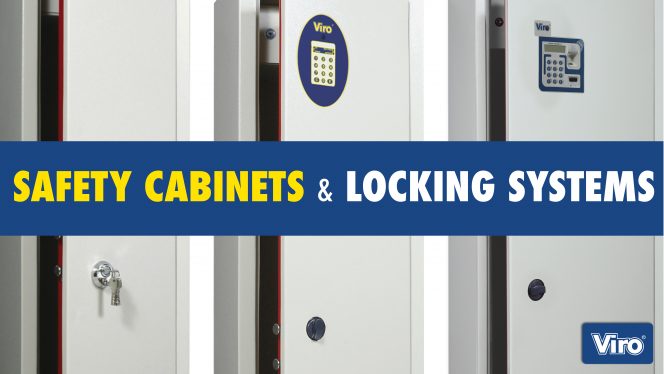One of the main doubts that can come to those who want to buy a security cabinet (gun cabinet or document cabinet) is the choice of the type of lock. There are, in fact, different types of mechanism:
- key-operated
- electronic combination
- biometric
Let’s find out the pros and cons of each of these locking mechanisms, to understand how they can be adapted to different needs:
1. Key-operated mechanical lock
A key-operated lock has the merit of being simple and generally less expensive. However, there is an important security issue: key management. If you leave the key in the same place as the cabinet, there is a risk that unauthorised persons might find it. Just imagine the risks involved with a gun cabinet having a key which could be potentially within the reach of children and young people living in the house. Or the risk that the key to a document cabinet could be found by anyone using the office where the cabinet is located.
An alternative would be to take the key with you, but this could be inconvenient and there would be the risk of losing it, having it stolen or being copied.
A secure solution would be to store the key in a different room from the one in which the cabinet is located, at the expense, however, of convenience.
2. Electronic combination lock
By eliminating the key, the electronic combination lock immediately solves all the problems related to key management. Besides the convenience of not having to hide the key, this solution offers the added advantage: being able to have a very large number of possible combinations.

Electronic gun cabinet “Compact” Viro
The electronic gun cabinet “Compact” Viro, for example, has up to 100 million possible combinations. The code change is of course only allowed when the door is open.
The solution that some electronic cabinets adopt, that of having an internal button which, if pressed, allows the combination change, is not the best possible solution. In fact, a thief who knows the position of the button could try to drill through the case with a drill and then use a small wire to press the internal button to enter a new code. For this reason, the best types of cabinets are equipped with a microswitch in the mechanism which detects the opening of the door and allows the combination to be changed only when the door is open.
3. Biometric lock
Biometric locks allow access by reading a physical characteristic unique to each individual, such as fingerprints. This is practical and secure because it is unique; the fingerprint cannot be copied and does not run the risk of being lost or found by a thief. We can say it’s always literally “on hand”.

The security cabinets of this type, which are suitable for protecting many sensitive documents, are usually able to store many fingerprints, thereby allowing their use by different people, even in contexts such as businesses and offices.

In the most advanced systems, such as the Viro “Ram-Touch II” security cabinet, you have the possibility to use up to 16 fingerprints and 16 codes (as in an electronic combination cabinet) according to your preferences. Moreover, one of the fingerprints can be set as the “Master” and be required every time it is necessary to store or delete other fingerprints used with the cabinet.
The Viro “Ram-Touch II” cabinet also provide many features, such as a log of all the operations performed (openings, setting changes, etc.) which is particularly useful for monitoring the use of the cabinet by multiple users.
It should be noted that both electronic and biometric versions can be equipped with an emergency opening key, which can be used in case of low batteries or if the electronics have been damaged due to possible theft attempts. This key can be stored in a different room to the one in which the cabinet is located, as its use will be limited to emergency cases only.
>> Discover the range of Viro security cabinets here!
>> Discover all the electronic features of the Viro “Compact” cabinet!
>> Discover the advanced features of the Viro “Ram Touch II” cabinet!
